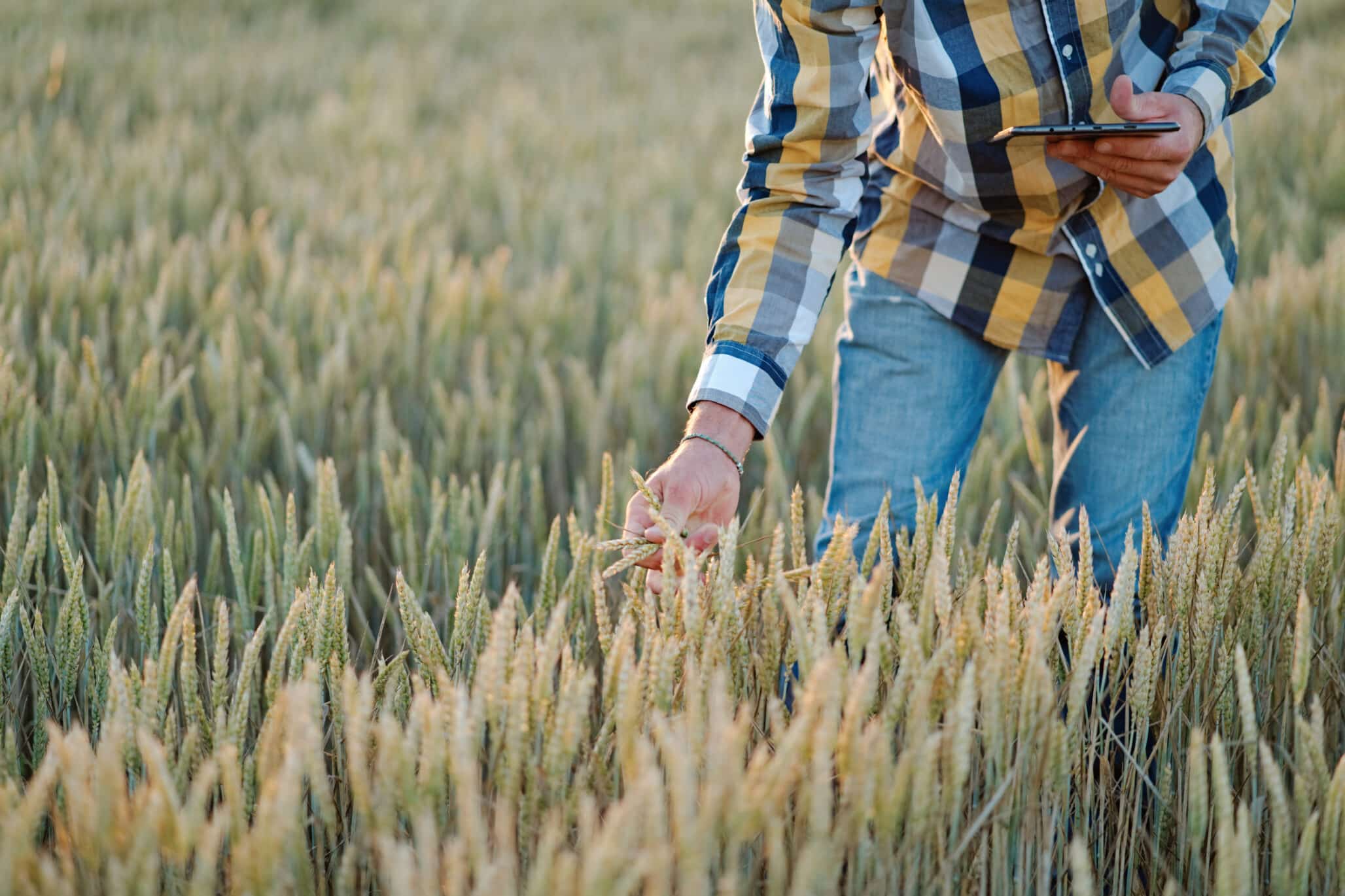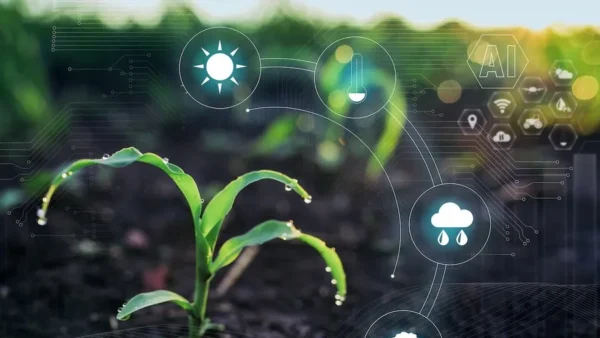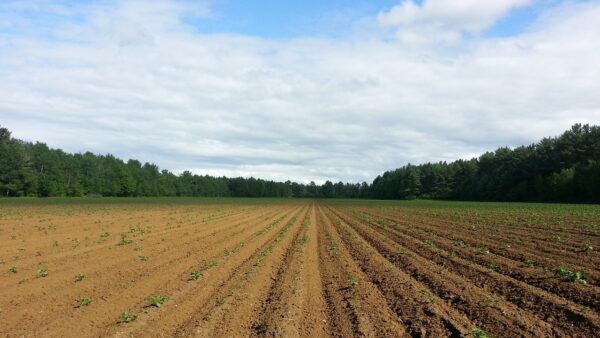France is often considered one of the, if not THE leading agricultural country in the EU. In 2018, the French agricultural industry contribution to the EU-28 total agricultural output was close to 18 per cent, well ahead of Italy, Spain and Germany. It is the No. 1 country in Europe for the production of cereals, poultry and beef, and is second, behind Germany, for milk and sugar beet. And with about 730,000 farms, approximately seven per cent of the workforce is employed in agriculture or similar sectors such as fishing or forestry. According to data of the EU Commission, France also has the largest rural population of the EU: 19.6%. The country is a top EU exporter, and second in the world, behind the United States of America. However, French agriculture is facing several challenges, social, economic and technical and its image is often distorted by alarmist messages circulating on the internet. Faced with this finding, 30 members of the French agriculture and technology academies set up a working group to study the possible contribution of technologies to help farmers face their technical challenges and have captured their findings in a book titled L’agriculture face à ses défis techniques – L’apport des technologies. European Seed spoke with the chairman of the working group and main author, Bernard Le Buanec.
“French agriculture is facing several challenges,” says Le Buanec. “Whilst knowing that technologies alone cannot solve all the problems, we decided in 2016 to set up a working group to analyse the situation. We interviewed 10 farmers producing different crops with different cropping systems, conventional or organic, to understand their main technical challenges. Then we presented those challenges to scientists and agricultural industry specialists to see if they had some technological solutions.”
[tweetshare tweet=”Genome editing techniques without using recombinant DNA should not be considered as regulated GMOs.” username=”EuropeanSeed”]
In summary, Le Buanec says the main findings are that the three most important technical challenges, whatever the crops and the cropping systems, are the following:
- the control of diseases and pests with a particular view of the impact of climatic change and emerging diseases;
- the control of weeds with a particular impact for field crops in organic agriculture;
- the water stress and the water limitations during the dry periods.
Several other challenges that are indicated in the book have also been cited.
Major Challenges: Diseases and Pests
Le Buanec says one of the reasons why the control of pests and diseases is an increasing challenge is the decrease in the number of pesticides allowed. During the past 10 years, the number of pesticides has dropped from 800 to 400.

“Of course, some of these bans were justified but, in that situation, farmers have to use the same products more frequently and this causes the emergence of tolerances or even resistances of many diseases and pests to the pesticides. To avoid that evolution, we need more phytosanitary products.” Le Buanec believes progress exists with the high throughput screening of new molecules, but the main obstacle remains the cost, in particular that of the dossier for marketing authorisation. The procedures should be more balanced between advantages and risks instead of focussing too much on risks that do not necessarily mean danger.
“In addition, politicians do not always follow the advice of the specialised agencies. Progress is also made in biocontrol, but its effectiveness is in general still inferior and more irregular than that of synthetic molecules.”
According to Le Buanec, several other solutions exist. The control of pests and diseases includes three phases: prophylaxis (including the use of resistant plant varieties) to reduce the risk, then the characterization of the risk to act wisely through decision support tools when the risk is proven and at a last resort only the direct fight with phytosanitary products.
Prophylaxis needs an agronomical approach based on the cropping system and the crop rotation. The tools of modelling and simulation of the growth of plants make it possible now to model the rotations taking into account the cycles of development of parasitic attacks. Digital technologies bring significant progress but raise some ethical issues regarding the use of big data.
Le Buanec says that huge progress is also made in decision support tools and farm machinery, allowing a better use of pesticides. But the more promising way of improvement is the development of resistant varieties.
Major Challenges: Weeds
“In terms of the need to allow for a broader application of glyphosate, the group did not focus particularly on one product. Some of the interviewed farmers said that the ban of glyphosate in 2022 will raise serious difficulties as, in many cases, there are no alternative solutions at the moment, in particular for conservation agriculture. This was confirmed by the president of INRA during a roundtable at the French Senate in 2018.”
Le Buanec states it is likely that waivers will be given in some cases until 2023, which is the date of the ban for Europe.
“As you know, based on the opinions of the European evaluation agencies, the proposal of the Commission was to reconduct the authorisation up to 2028. To our specialists it is unlikely that new total herbicides will be developed and marketed in the near future.”
Similar to pest and diseases, the control of weeds includes three phases: prophylaxis to reduce the risk, then characterisation of the risk through decision support tools and then the direct fight when the risk is proven.
“For direct control several possibilities exist. Mechanical weeding is making progress thanks to precision farming and the current evolution allows us to foresee in the coming years the use of weeding robots.”
He says biocontrol, using antagonistic microorganisms is starting to be implemented. The search for so-called “natural molecules”, because extracted from plants, is also under development. However, if some of these products are effective on certain species, they have a limited duration of action and are depending of climate conditions, as often in biocontrol. “In addition, their sanitary and ecotoxicological profiles remain to be completed. It is not because that they are ‘natural’, that they are safe.”
[tweetshare tweet=”Huge progress is made in decision support tools and farm machinery, allowing a better use of pesticides.” username=”EuropeanSeed”]
The competitiveness of cultivated plants is also a path under development. A first approach is the choice of varieties with early vigour and a high covering power to compete with weeds. Those characters may be improved by plant breeding. Another approach is the priming of the seed that is used industrially today for high value crops such as vegetables or sugar beets.
“Once again, we see the importance of plant breeding and the seed industry.”
Looking Back, Looking Ahead
Plant breeding, including the new plant breeding techniques such as gene-editing and CRISPR, can provide relief to several challenges such as faster and more efficient development of resistant plant varieties.
“For many decades plant breeding has been proven to create parasite-resistant varieties,” says Le Buanec. “The tools available to breeders have diversified as knowledge has progressed in various fields, including biology, but also in electronics, computing and biophysics. Effectively the working group, among all those new technologies, has discussed in depth the new possibilities of genome editing including CRISPR. At the very beginning of our work, in January 2016, we have adopted an opinion indicating that, according to our analysis, genome editing techniques without using recombinant DNA should not be considered as regulated GMOs according to the directive 2001/18/CE. This opinion has been endorsed by the French Academies of Agriculture and Technologies, as well as by the UEAA (Union of European Academies for Science Applied to Agriculture, Food and Nature) in October of the same year. This was also the opinion of the General Advocate of the CJEU, but not followed by the court. Genome editing is a very efficient tool for allele replacement and will facilitate plant improvement.”
Water Stress
Le Buanec states water stress can significantly lower yields as became apparent in 2018 and 2019. Several solutions exist, including water stress tolerant varieties. The high throughput phenotyping allows to detect the best varieties under water stress and then detect chromosomes or chromosomal areas (so called Quantitative Trait Loci or QTLs) implicated in drought tolerance. The knowledge of these genes and QTLs then makes it possible to quickly select interesting candidate varieties.
“Transgenesis and gene editing offer also good possibilities. Results have already been obtained in maize at the International Maize and Wheat Improvement Center (CIMMYT). As detailed in the book, the improvement of photosynthesis and the transformation of C3 plants in C4 plants are a long term, but certainly interesting approach.”
[tweetshare tweet=”It should be stressed that the seed industry has a major role to play. Indeed, we have seen that plant breeding has a huge impact to help facing most of the challenges of the farmers, should it be pests and diseases, weed and water stress control.” username=”EuropeanSeed”]
However, he says in case of very severe drought, irrigation will be necessary. According to the Intergovernmental Panel on Climate Change (IPCC) estimation in 2100, 60 per cent of the French territory will suffer from agronomic drought. So, a pre requisite will be to have water reserves available. This is not easy in France due to environmental lobbies. Contrary to Spain and Portugal where 21 per cent of the rainwater is stocked, in France it is only 2.7 per cent. “Then, when you have water available, it is necessary to control irrigation. There are different types of probes that can be placed in the soil to get a picture of the water available to the plants. Constant progress is made in irrigation equipment. The generalisation of the drip irrigation should allow for additional savings. The buried drip irrigation allows a saving of water up to 30 per cent.”
Is the toolbox full or empty?
In terms of French farmers having enough tools in their toolbox to continue to produce enough and high-quality food, Le Buanec states a lot of progress has been made, but most of it is incremental.
The main “revolution” is the digital progress impacting all the domains.
“Yes, it seems that the farmers have efficient tools in their toolbox. However, the perception of new technologies by the society is not homogeneous,” he says. “Ethical viewpoints regarding their use will lead to completely opposed expressions and behaviour. In addition to those ethical issues, we need to take into account the financial aspects, as at the moment many farmers are in difficult situations. All farmers are aware of the need to adapt their practices to the new technical and societal environment. But it will take time because the modification of an agrosystem, or living organism, cannot be done without a minimum time of adaptation.
“It should be stressed that the seed industry has a major role to play. Indeed, we have seen that plant breeding has a huge impact to help facing most of the challenges of the farmers, should it be pests and diseases, weed and water stress control. Seed priming and seed treatments are also important.”
Le Buanec says in all European countries, farmers are facing the same challenges, however, with more or less stringent regulations.This convergence is well shown, for example, with regard to diseases and pests, in the study ‘Challenges facing European agriculture and possible biotechnological solutions’ published in 2015 in the journal ‘Critical Reviews in Biotechnology’ The example of the 2019 drought, which was also severe in several European countries, shows the convergence of problems. So, the technical solutions developed in our book should be useful to all farmers and not only in Europe.
In regard to moving forward, Le Buanec says their main recommendations are:
- to maintain a strong multi-disciplinary research;
- to put in place regulations based on a scientific advantage vs. risks analysis and not only focus on the risks;
- to educate the EU citizens, and particularly the young ones, on agriculture and on data that have a sound scientific and technical basis, to avoid fake news.
- that governments take action to ensure that agriculture benefits from new technologies, particularly from the development of new varieties and the use of massive data, while taking into account ethical questions.
To ensure the findings will be heard by the policy makers in Paris, Le Buanec has sent their book with the recommendations to the cabinet of the President and various ministries. “We have received several acknowledgements of receipt. But of course, we don’t know what the final result will be.”












